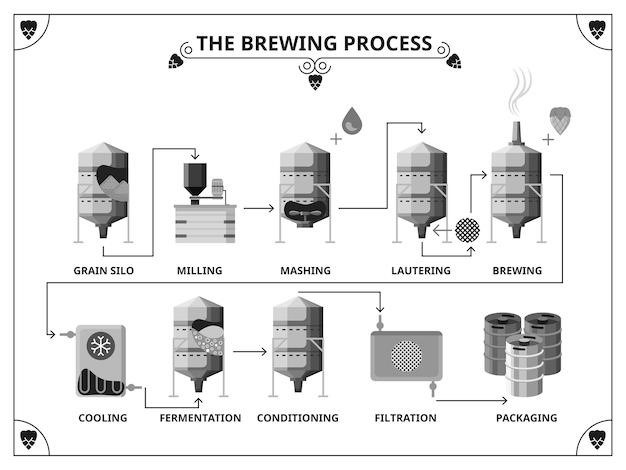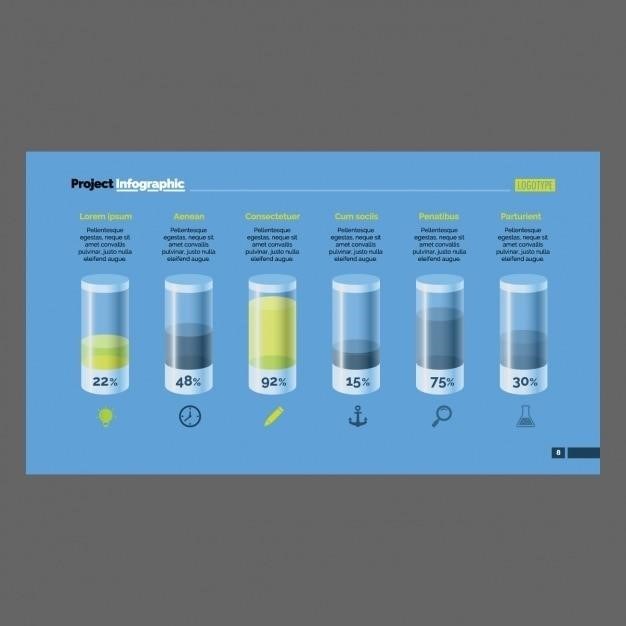ibcs pdf

ibcs pdf
IBCS Standards⁚ A Comprehensive Guide
The International Business Communication Standards (IBCS) are a set of practical rules for designing comprehensible reports and presentations. They are published for free use under a Creative Commons license (CC BY-SA). The IBCS Standards are available in a PDF format and cover all conceptual, perceptual, and semantic rules for the design of reports, presentations, and dashboards. The IBCS Standards (PDF) are 150 pages illustrated with more than 180 instructive figures and cover all conceptual, perceptual, and semantic rules for the design of comprehensible reports, presentations, and dashboards. The PDF transcript of the IBCS Standards is available for free to members of the IBCS Association.
Introduction to IBCS
The International Business Communication Standards (IBCS) represent a groundbreaking approach to creating clear, concise, and effective business communication. This framework aims to standardize the design of reports, presentations, and dashboards, ensuring that information is presented in a way that is easily understood and interpreted. At its core, IBCS emphasizes the importance of visual perception and semantic notation, ensuring that data is not only presented accurately but also visually appealing and readily comprehensible. The IBCS philosophy is rooted in the recognition that poorly designed communication can lead to misinterpretations, confusion, and ultimately, poor decision-making. By adopting IBCS principles, organizations can foster a culture of informed decision-making, as data is presented in a clear and unambiguous manner.
The History and Development of IBCS
The genesis of IBCS can be traced back to Rolf Hichert, a former McKinsey consultant and CTO of a niche German BI system, MIS. Hichert’s vision was to create a set of practical guidelines and semantic standards for designing reports and charts that would ensure clarity and accuracy. He recognized the limitations of traditional communication methods, where complex data was often presented in ways that were difficult to understand, leading to misinterpretations and flawed decision-making. IBCS emerged as a solution to this problem, providing a structured framework for creating effective business communication. The initial development of IBCS was spearheaded by Hichert and a team of experts in the field of business communication and information design. The standards have evolved over time, with input from a diverse range of stakeholders, including business leaders, data analysts, and communication specialists. The IBCS Association, a non-profit organization, manages the ongoing development and dissemination of the standards.
Key Principles of IBCS
IBCS is built upon a foundation of three core principles⁚ conceptual, perceptual, and semantic. The conceptual principle emphasizes the importance of clear and logical organization of information. This means structuring content in a way that aligns with the natural flow of thought and ensures that information is presented in a coherent and meaningful manner. Perceptual design focuses on creating visually appealing and easily digestible graphics. This involves utilizing color, shape, and spacing effectively to guide the viewer’s eye and facilitate rapid comprehension. Semantic notation plays a crucial role in establishing a consistent visual language. This involves using standardized symbols and icons to represent specific concepts and data points, ensuring that all stakeholders understand the meaning of the information presented. These three principles work together to create a unified system for designing reports, presentations, and dashboards that are not only visually appealing but also highly effective in conveying complex information clearly and accurately.
The Benefits of Using IBCS
Adopting IBCS brings a multitude of benefits to organizations seeking to enhance their communication effectiveness. The standardization of reports and presentations fosters consistency, ensuring that all stakeholders are presented with information in a uniform and easily understandable format. This uniformity reduces ambiguity and misinterpretation, leading to improved decision-making. IBCS empowers audiences to quickly grasp complex information, reducing the time required to extract key insights. This efficiency translates to increased productivity and quicker decision-making processes. By employing a clear and consistent visual language, IBCS promotes accessibility for a wider audience, including those with visual impairments or limited data literacy. This inclusivity fosters a more informed and engaged workforce. Furthermore, IBCS promotes data integrity by ensuring that all information is presented accurately and consistently, reducing the risk of errors and misinterpretations. This meticulous approach enhances trust and confidence in the data presented.
IBCS Standards⁚ Version 1.2
IBCS Version 1.2 represents a significant milestone in the evolution of the International Business Communication Standards. This version offers a comprehensive set of practical guidelines for the consistent design of reports, presentations, dashboards, and the charts and tables contained within them. Version 1.2 builds upon the foundation laid by previous iterations, incorporating new insights and best practices gleaned from real-world applications. It provides detailed guidance on visual elements such as color, font, and layout, ensuring a cohesive and easily digestible presentation of information. The updated standards emphasize the importance of clear and concise communication, ensuring that data is presented in a way that is readily understood by all stakeholders, regardless of their technical expertise. Version 1.2 continues to promote the use of semantic notation, a system of visual cues that helps users quickly grasp the meaning of data and identify key trends and relationships.
The IBCS Association
The IBCS Association is a non-profit organization dedicated to promoting the adoption and implementation of the International Business Communication Standards (IBCS). The association plays a vital role in fostering a community of IBCS practitioners and advocates, providing a platform for knowledge sharing, collaboration, and the ongoing development of the standards. The IBCS Association offers a range of resources and services to its members, including access to the latest version of the IBCS Standards in PDF format, educational materials, training programs, and networking opportunities. The association actively engages with industry experts and thought leaders to ensure that the IBCS standards remain relevant and responsive to the evolving needs of businesses. Through its efforts, the IBCS Association seeks to empower organizations to communicate effectively, make informed decisions, and achieve their strategic goals.
The IBCS Success Formula
The IBCS Success Formula is a set of 98 practical rules for designing charts and tables that are both visually appealing and semantically clear. These rules are based on the principles of information design, cognitive psychology, and visual perception. The IBCS Success Formula aims to ensure that reports, presentations, and dashboards are easy to understand, interpret, and act upon. The formula is designed to help users avoid common design pitfalls that can lead to misinterpretations and misinformed decisions. The IBCS Success Formula is available as a PDF poster that provides a visual overview of the 98 rules. The poster is a valuable resource for anyone who wants to learn more about the principles of effective business communication. The IBCS Success Formula is a powerful tool for improving the quality of business communication and ensuring that information is presented in a way that is both informative and engaging;
IBCS in Practice
IBCS is a valuable tool for improving the quality of business communication and ensuring that information is presented in a way that is both informative and engaging. The IBCS Standards provide practical guidelines for the consistent design of reports, presentations, dashboards, and the charts and tables they contain. IBCS can be applied to a wide range of business communication tasks, including⁚
- Creating reports that are clear, concise, and easy to understand
- Developing presentations that are visually appealing and persuasive
- Designing dashboards that provide a clear overview of key performance indicators
IBCS is a valuable asset for any organization that wants to improve the effectiveness of its business communication. The IBCS Standards are available in a PDF format and can be downloaded for free from the IBCS Association website.
The Future of IBCS
The future of IBCS is bright. The IBCS Association is committed to continuing to develop and promote the IBCS Standards, and the organization is actively working to expand the reach of IBCS to new audiences. The IBCS Standards are being adopted by an increasing number of organizations around the world, and the IBCS Association is working to develop new resources and tools to support the implementation of IBCS. The IBCS Association is also working to develop new versions of the IBCS Standards to address the evolving needs of businesses. The IBCS Association is committed to ensuring that the IBCS Standards remain relevant and effective in the years to come.
Where to Find IBCS Resources
The IBCS Association website is the primary source of information about IBCS. The website includes a wealth of resources, including the IBCS Standards (PDF), articles, presentations, and videos. The IBCS Association also offers a variety of training and certification programs. The IBCS Association also has a dedicated forum where users can connect with other IBCS practitioners and share their experiences. The IBCS Association also offers a variety of resources to help organizations implement IBCS, including templates, tools, and case studies. The IBCS Association is committed to providing organizations with the resources they need to successfully implement IBCS.

The IBCS Standards are a valuable resource for organizations looking to improve the clarity and effectiveness of their business communication. By following the IBCS guidelines, organizations can create reports, presentations, and dashboards that are easier to understand and interpret. The IBCS Standards are a practical and effective way to improve business communication and decision-making. The IBCS Standards are a valuable tool for organizations of all sizes and industries. The IBCS Standards are a testament to the power of good design to improve communication and decision-making. The IBCS Standards are a valuable resource for anyone looking to improve their business communication skills.

IBCS and Business Communication
IBCS provides a framework for designing effective business communication, ensuring data is presented clearly and consistently, leading to better decision-making.
IBCS and Data Visualization
IBCS plays a pivotal role in data visualization by establishing a set of guidelines that ensure the effective and accurate representation of information. These guidelines address various aspects of visualization, including chart types, color schemes, and labeling conventions. By adhering to IBCS principles, organizations can create data visualizations that are not only visually appealing but also easily understandable and interpretable. This clarity in data visualization promotes better communication, reduces ambiguity, and facilitates more informed decision-making.
IBCS encourages the use of appropriate chart types for different types of data. For instance, bar charts are ideal for comparing categories, while line charts are better suited for showing trends over time. The standards also emphasize the importance of using clear and concise labels for axes, data points, and legends. This ensures that the data is presented in a way that is easily understood by the intended audience.
Furthermore, IBCS promotes the use of consistent color schemes throughout data visualizations. This consistency enhances the overall visual appeal and makes it easier for viewers to identify patterns and trends. By following IBCS guidelines for data visualization, organizations can create compelling and informative visuals that contribute to a more data-driven and insightful business environment.
IBCS and Report Design
IBCS significantly influences report design, transforming reports from mere collections of data into compelling and informative documents. This transformation is achieved through a set of principles that govern the structure, content, and visual presentation of reports, ensuring clarity, conciseness, and ease of understanding. By adhering to IBCS guidelines, organizations can create reports that effectively communicate key messages, facilitate informed decision-making, and ultimately drive positive business outcomes.
One key aspect of IBCS in report design is the emphasis on a clear and logical structure. Reports should follow a consistent flow, with information organized in a way that guides the reader through the key findings. This structure often involves a clear introduction, a body that presents the data and analysis, and a conclusion that summarizes the key takeaways. IBCS also promotes the use of headings, subheadings, and bullet points to enhance readability and make the report more digestible.
Furthermore, IBCS addresses the visual presentation of reports. It emphasizes the use of clear and concise language, avoiding technical jargon whenever possible. The standards also encourage the use of visuals such as charts, tables, and graphs to effectively present data and enhance the reader’s understanding. By incorporating these principles into report design, organizations can create reports that are both informative and engaging, effectively communicating complex information to a wide audience.
IBCS and Presentation Design
IBCS principles are equally applicable to presentation design, transforming presentations from mere slideshows into powerful tools for conveying complex information effectively. IBCS emphasizes clarity, conciseness, and visual appeal, ensuring that presentations are engaging, informative, and memorable. By adhering to IBCS guidelines, presenters can create presentations that captivate their audience, facilitate understanding, and ultimately drive desired outcomes.
One of the key principles of IBCS in presentation design is the focus on a clear and concise narrative. Presentations should tell a story, starting with an engaging introduction that sets the context, followed by a logical progression of key points, and culminating in a strong conclusion that summarizes the main takeaways. IBCS also encourages presenters to use a limited number of slides, focusing on delivering impactful information rather than overwhelming the audience with data.
Moreover, IBCS promotes the use of visually appealing elements to enhance the presentation’s impact. These elements can include high-quality images, charts, and graphs that effectively illustrate data and key messages. IBCS also emphasizes the importance of using consistent formatting and a clear visual hierarchy, ensuring that the presentation is visually appealing and easy to follow. By incorporating these principles into presentation design, organizations can create presentations that are both informative and engaging, effectively communicating complex information to a wide audience.
IBCS and Dashboard Design
IBCS plays a vital role in dashboard design, transforming static data displays into interactive and insightful tools for decision-making. By applying IBCS principles, organizations can create dashboards that effectively communicate key performance indicators (KPIs), highlight trends, and facilitate informed decision-making. IBCS guidelines for dashboard design emphasize clarity, consistency, and user-friendliness, ensuring that dashboards are easy to understand, interpret, and act upon.
A key aspect of IBCS-compliant dashboard design is the use of clear and concise visual representations. Dashboards should employ a limited number of charts and graphs, each designed to effectively communicate a specific data point or trend. IBCS recommends using standardized chart types, such as bar charts, line charts, and pie charts, to ensure consistency and ease of interpretation. Furthermore, dashboards should utilize a consistent color scheme and visual hierarchy, making it easy for users to navigate and identify key information.
Another important element of IBCS-compliant dashboard design is the focus on interactivity. Dashboards should allow users to drill down into data, filter information, and explore different perspectives. This interactive functionality empowers users to gain deeper insights and make more informed decisions. By applying IBCS principles to dashboard design, organizations can create powerful tools that enhance data visualization, facilitate data-driven decision-making, and ultimately improve business performance.